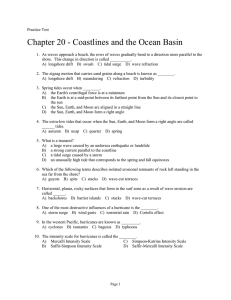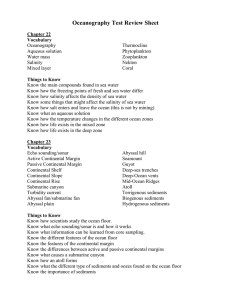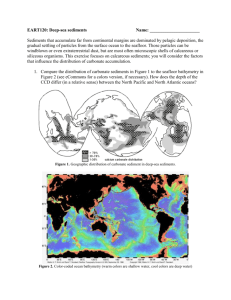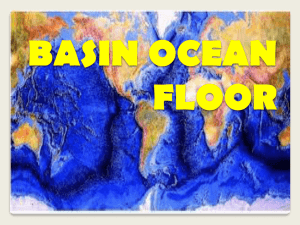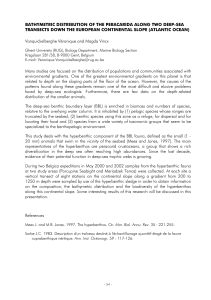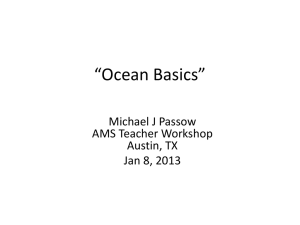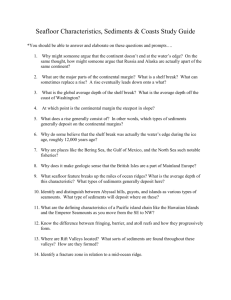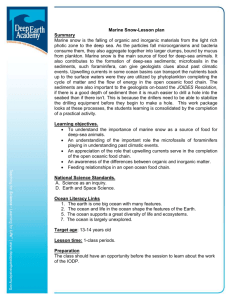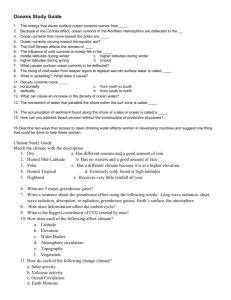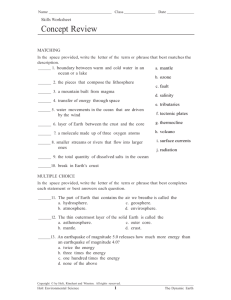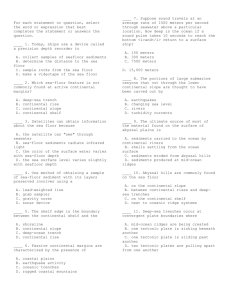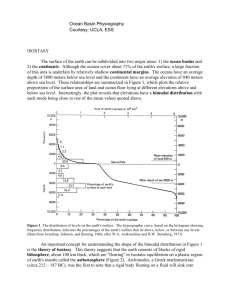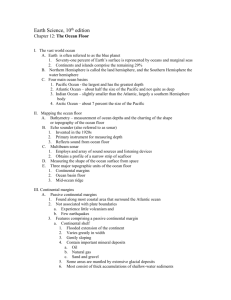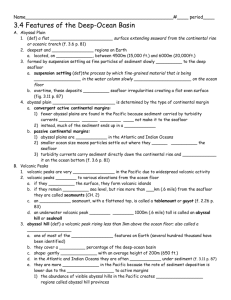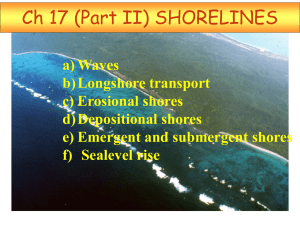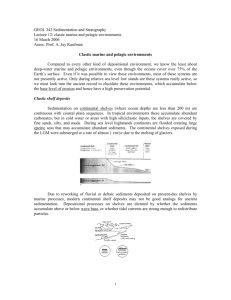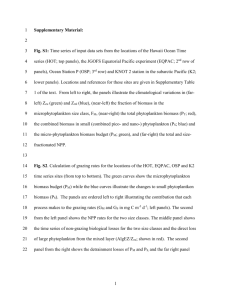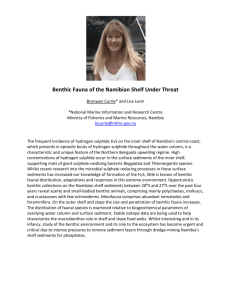Chapter 16 Review
advertisement
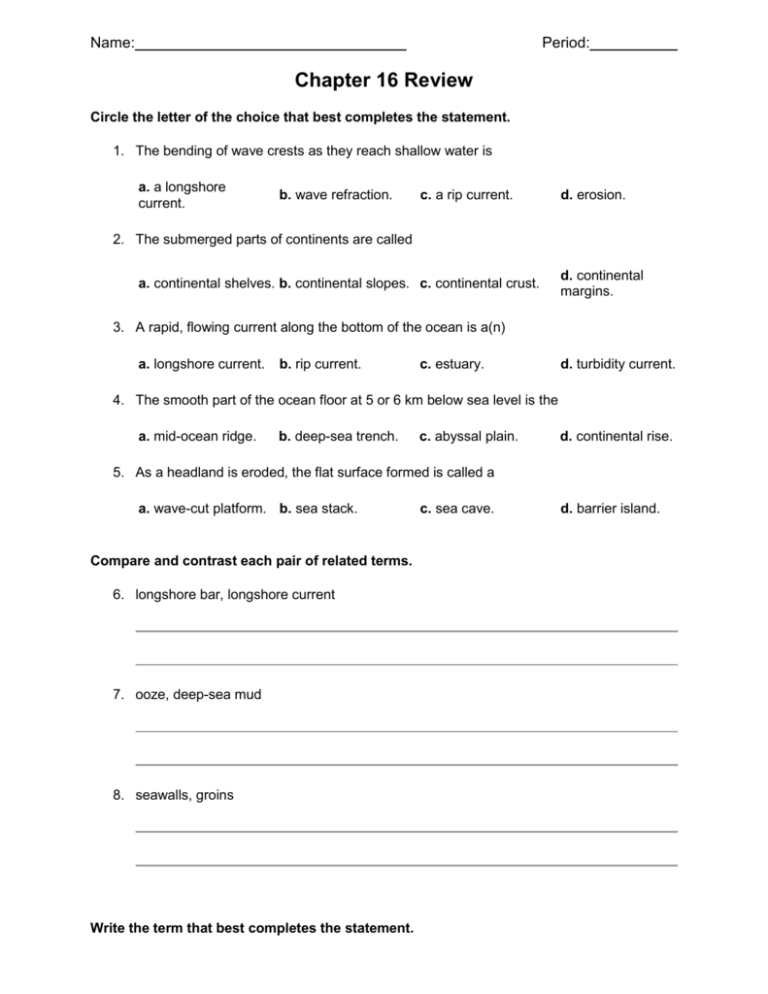
Name: Period: Chapter 16 Review Circle the letter of the choice that best completes the statement. 1. The bending of wave crests as they reach shallow water is a. a longshore current. b. wave refraction. c. a rip current. d. erosion. 2. The submerged parts of continents are called a. continental shelves. b. continental slopes. c. continental crust. d. continental margins. 3. A rapid, flowing current along the bottom of the ocean is a(n) a. longshore current. b. rip current. c. estuary. d. turbidity current. 4. The smooth part of the ocean floor at 5 or 6 km below sea level is the a. mid-ocean ridge. b. deep-sea trench. c. abyssal plain. d. continental rise. 5. As a headland is eroded, the flat surface formed is called a a. wave-cut platform. b. sea stack. Compare and contrast each pair of related terms. 6. longshore bar, longshore current 7. ooze, deep-sea mud 8. seawalls, groins Write the term that best completes the statement. c. sea cave. d. barrier island. abyssal plains barrier islands beach erosion hydrothermal vent ooze turbidity currents 1. ___________________ are long ridges separated from the mainland and are made of sediment deposited by longshore currents. 2. Seawalls, groins, jetties, and breakwaters are built to prevent ___________________. 3. ___________________ are perhaps the flattest places on Earth and are covered with hundreds of meters of fine-grained sediments and sedimentary rocks. 4. Deep-sea sediments formed by shells and hard parts of marine organisms are called ___________________. 5. Submarine canyons are formed by ___________________. 6. A hole in the seafloor through which fluid heated by magma erupts is an(n) ___________________. In the space at the left, write true if the statement is true; if the statement is false, change the italicized word or phrase to make it true. ___________________ 7. Once a seafloor structure, such as a seamount, is formed, the only process that modifies it is erosion. ___________________ 8. Black and white smokers are submerged basalt volcanoes. ___________________ 9. Deep-sea sediment from a land source is called terrigenous sediment. ___________________ 10. A ridge of sand called a tombolo connects an island to the mainland to form the tip of a peninsula. Write the letter of the effect in the second column next to the action that causes it in the first column. Cause Effect ______ 1. Melting ice-age glaciers a. submarine canyons ______ 2. Rising coastline b. rise in sea level ______ 3. Rapidly flowing turbidity currents c. turbidity currents ______ 4. Underwater landslides, earthquakes, or large storm waves d. harbor entrance closes 5. Sand drifting around jetties e. drop in sea level ______ Write the terms to complete the network tree concept map. abyssal plain warm water volcanic activity fractures mid-ocean ridges deep-sea trench black smoker hydrothermal vent Answer the following questions. 1. Researchers find that sediments along the ocean bottom seem to be sorted by size. Coarse gravel and sand are found close to shore. Fine particles are deposited at a greater distance from shore. What can you infer about the movement of sediments from these observations? 2. What observations support the fact that turbidity currents help form the topography of the seafloor? 3. How would the data in this graph change if the polar ice sheets melted? Research has shown that the temperature of the ocean varies with ocean depth. Use data from the table and graph to help you with the activities that follow. Ocean depth (m) 100 200 300 380 500 600 700 800 Water temperature (°C) 23 23 23 15 5.5 5 5 5 900 1000 1100 1200 5 4.5 4.5 4 1. Describe the relationship between water temperature and ocean depth from the graph. 2. Formulate a hypothesis to explain why water temperature decreases as water depth increases. 3. Plan an experiment to prove your hypothesis. Your plan should include variables, controls, and expected results. 4. Once the cause of the temperature difference has been identified, researchers may want to determine what effect, if any, the temperature difference has on ocean organisms. Suggest questions or phenomena that might be investigated. 5. Which question or phenomenon that you wrote for question 3 would you like to investigate? Why?

